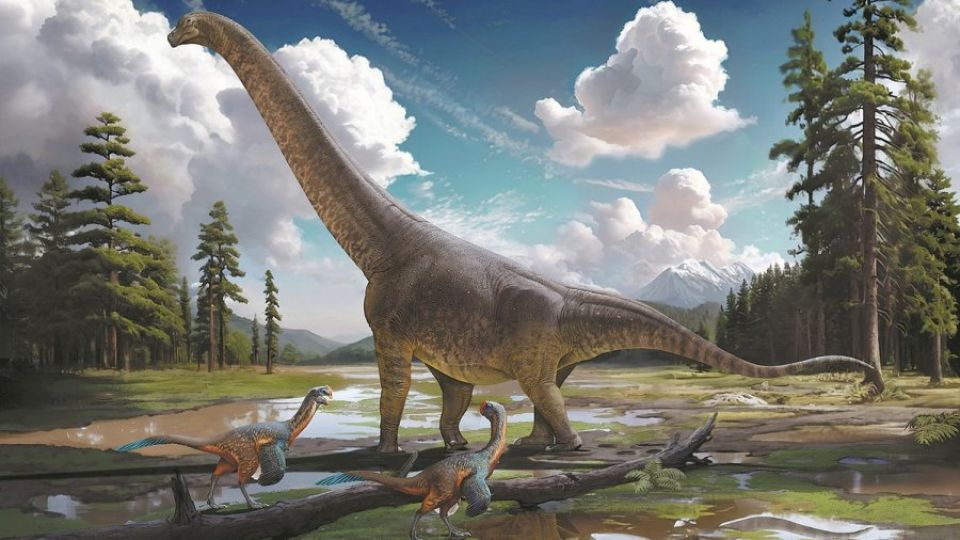February 6, 2024
BEIJING – Paleontologists in China have discovered a new species of dinosaur, which suggests the existence of a previously unknown group of titanosaurs in eastern Asia.
The fossils of Gandititan cavocaudatus, the new dinosaur, were found at a construction site in Ganxian district in Ganzhou, East China’s Jiangxi province, in June 2021, the Jiangxi Geological Museum announced on Jan 30.
The fossils are thought to date back 90 million years.
The museum collaborated with the China University of Geosciences in Wuhan and the Jiangxi Geological Survey and Exploration Institute to restore and research the bones.
Han Fenglu, the project’s team leader from the university in Wuhan, Hubei province, said the species is a titanosaurian sauropod.
The bones found include six cervical vertebrae, two partial dorsal vertebrae and a complete sacrum preserved in articulation with the first 17 caudal vertebrae and part of the right pelvis. These bones comprise about 40 percent of the dinosaur’s skeleton, which is rare to find in such a complete state.
Based on estimates made by the research team, it is believed that the dinosaur had a neck and tail that were each around 5 meters long. This estimation helped to determine the total body length of the dinosaur was about 14 meters, which is relatively small compared to other sauropods, according to Han.
The skeletal fusion was well-developed, which led researchers to estimate that the newly discovered dinosaur was, at a minimum, in the sub-adult stage.
This discovery, published in the latest edition of the Journal of Systematic Palaeontology on Jan 17, is of immense importance for studying species’ evolution and geographic distribution during the Cretaceous period.
According to the study, an expanded analysis places Gandititan as the sister taxon to Abdarainurus, within a clade of nonlithostrotian titanosaurs that also includes the Chinese titanosaur Dongyangosaurus, as well as the Argentine titanosaur Andesaurus.
These findings suggest the possibility of an unrecognized group of titanosaurs in eastern Asia and the potential dispersal of titanosaurs between Asia and South America during the mid-Cretaceous period.
Gandititan is a combination of “Gan”, which refers to the city where the fossil was found, and “di”, which means “geology” in Chinese, the paper said. The name also honors the geological research conducted in Ganzhou, also known as the “home of Chinese dinosaurs”.
The suffix “titan” is commonly used in the naming of sauropods.
Scientists believe sauropods first appeared around 200 million years ago in the Early Jurassic period. The dinosaurs became widespread around 160 million years ago, existing until the end of the Cretaceous period. However, due to the generally poor preservation of fossils, debates about their origin and evolution continue.


